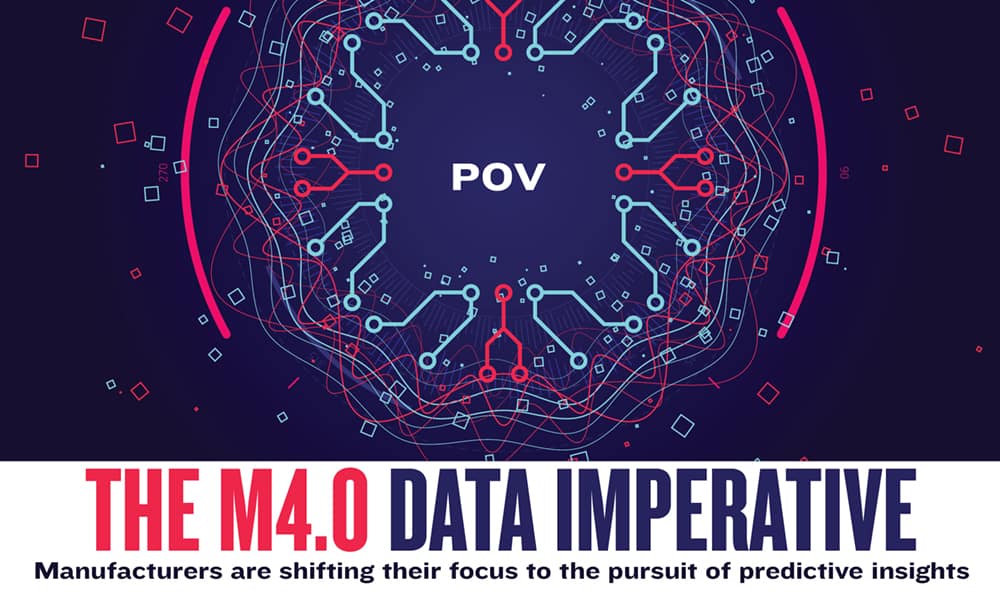
There has never been a time in manufacturing history when so much data has been available to help companies understand their operations so effectively and leadership teams to make faster and better decisions.
Multiple M4.0 technologies are now generating data at an exponentially increasing rate – about materials, machines, processes, people, products, networks, customers, suppliers, markets, climate impacts, and, as we see so acutely in today’s devastating worldwide health crisis, disruptive global trends. And those data volumes are only going to get a lot steeper in the years ahead.
But it’s not how much you’ve got that matters, it’s what you do with it.
In many ways it’s still early days in manufacturing’s journey to learn how best to make use of all the data and intelligence being created. The results of our new M4.0 Data survey in this issue of the Journal reveal that many of the most important challenges for the industry go far beyond physically collecting, storing, and using all that data.
Successful data mastery also requires changes in corporate strategies to be able to identify the right data, to verify its accuracy, to analyse it, to share it, and to act on it swiftly to make a proactive difference to a company’s performance.
As more manufacturing companies embrace advanced analytical technologies and techniques such as artificial intelligence and machine learning systems, the focus of analytical attention is now shifting from the indicative and descriptive, to the predictive, allowing them to plan ahead and prepare for what’s to come more effectively.
This pursuit of predictive insights is perhaps the holy grail of the M4.0 revolution, allowing companies to evaluate, extrapolate, anticipate, and, where necessary, mitigate in ways never possible before.
But this transition comes with its own challenges. Unless the basic data used to prime these new analytical engines is trustworthy, unless the predictive algorithms are properly designed to avoid unintended bias and imbalance, and unless the recipients of the final analysis are prepared to act on the results with confidence, the value of those much-sought after predictive insights to improve business performance will be undermined.
As Nobel prize-winning quantum physicist Niels Bohr noted a century ago, “Prediction is very difficult, especially if it’s about the future.”
The challenge for manufacturing companies in the years ahead will be to make that future a lot easier and a lot better – for everyone. – Paul Tate